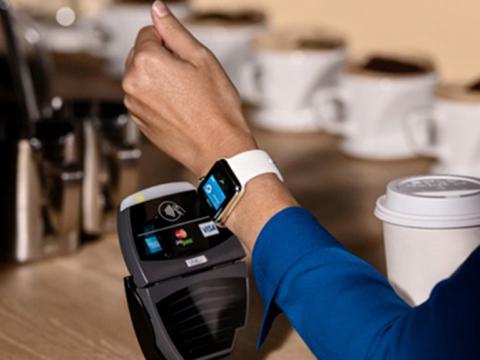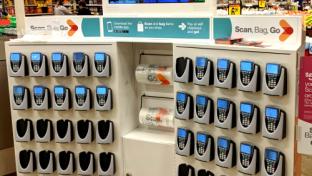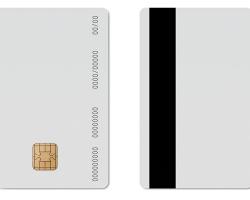Pandemic Promises Payment Changes for Grocery Stores

As the grocery industry wrestles with all the challenges and changes brought on by the COVID-19 pandemic, the issue of safe payments is attracting greater attention. No one wants cashiers or customers to come down with the coronavirus, nor do grocery store operators want to grapple with the negative attention that would likely come with any outbreak traced to their stores.
At the same time, thought is more often turning to the type of world that will emerge from this pandemic. There seems a reasonable chance, according to some experts, that the post-pandemic grocery industry could help lead, spark or at least further encourage shifts in retail payments – changes that were in place before the pandemic but are likely gaining fresh energy as a result of the precautions being taken during this time of social distancing and acute attention to public health.
When it comes to payments for groceries – whether during a pandemic or not – the industry faces more challenges than do most other areas of retail, said Randy Vanderhoof, director of the U.S. Payments Forum, a trade group that keeps a close eye on emerging payment technologies. Most grocery purchases still happen in stores, not via online or mobile channels, and grocery stores tend to accept a much wider variety of payments than do most other retailers, methods that can include Supplemental Nutrition Assistance Program (SNAP) and Women, Infant and Children (WIC) payments, and PIN-enabled debit cards (which require customers to touch screens), among others.
“There are a lot of cash-back situations in grocery stores, and a lot of them have banks in there as well,” Vanderhoof said.
As well, the nature of those in-person payments also put the grocery industry at a significant risk for virus transmission during transactions, even though chains and individual stores have certain taken efforts to protect checkout workers and customer, including masks and plastic barriers. The U.S. Payments Forum, in fact, recently launched an educational effort to encourage even safer payments in the grocery industry and other parts of retail as this pandemic drags on. Those tips include not letting contactless payment cards touch readers, ample use of soap and sanitizer and customers using their own stylus to enter their PINs when needed.
But nothing lasts forever, and this pandemic will eventually fade. And it’s not too early to think of how the grocery store checkout and transaction experience might change. Already, Vanderhoof said, the grocery industry is an innovative state of mind, given how it has had to deal with health concerns and the shift by many consumers to delivery and pickup options, find the best ways to conform to social distancing and associated guidelines, and better serve senior citizens and other consumer segments. “I think they are doing a really good job of managing a lot of different pressures,” he said.
Maintaining that mindset as the pandemic ebbs could go a long way to help grocery store operators keep a step ahead of the payments changes that are likely to come. Take contactless payments as one probable example. After years of false starts, delays and general consumer apathy, contactless payment cards – especially those that run according to the global EMV security standard – were finally gaining meaningful traction in the 12 to 18 months prior to pandemic isolation. As Vanderhoof sees it, social distancing and the move away from any form of physical contact promises to give a further boost to contactless payments, and it’s a good bet that trend will increase with grocery store transactions. Some payment terminals might require an upgrade, and checkout workers will have to get used to seeing those transactions more often. Those are not massive changes, not for most stores, but they will require at least some attention and investment from some grocery operators.
Mobile payments and mobile wallets also look likely to enjoy more of the spotlight during and after the pandemic. Mobile wallets were still struggling to gain a significant role in U.S. retail payments before the transaction even though major technology players such as Apple and Google were still betting big, via deployments, tech development and marketing, that the payment method would eventually gain a solid consumer base, probably among millennial and younger consumers. Vanderhoof anticipates that use of mobile payments and wallets will earn more popularity during the pandemic and retain that energy after the new normal takes hold.
“It will be broader than just Apple or Google Pay,” he said. “It will include grocer-enabled mobile apps.” If true, such grocer-supported mobile payment methods could open the door to new mobile marketing and loyalty efforts, which, according to payment experts in general, could appeal to millennial consumer who (at least before the pandemic hit) were moving toward their peak earning years.
The emphasis on avoiding physical contact could also lead to further declines in PIN debit transactions. That could actually present a kind of danger for some grocery stores, as many customers, including lower income ones, still are required to use PINs as part of their debit programs. PIN transactions won’t disappear in the immediate aftermath of the pandemic, of course, but some programs might change, and some PIN options might shrink.
Looking beyond specific payment methods, self-checkout options and even automated checkout – think of the ongoing Amazon Go grocery and convenience store experience --- also could gain better prospects as a result of shopping and purchasing habits formed during this pandemic.
“Getting people to change their behavior is always the hardest thing about trying to sell them on new technology,” Vanderhoof said. “But this (pandemic) is forcing them to change their behavior. People who never dreamed about using an online shopping service for grocery, for example, will discover that it is cool and efficient.”
Those are some of the changes that could stick with grocery after the pandemic ends. But it’s still a long way from here to there, and customers are still getting used to the new habits.




